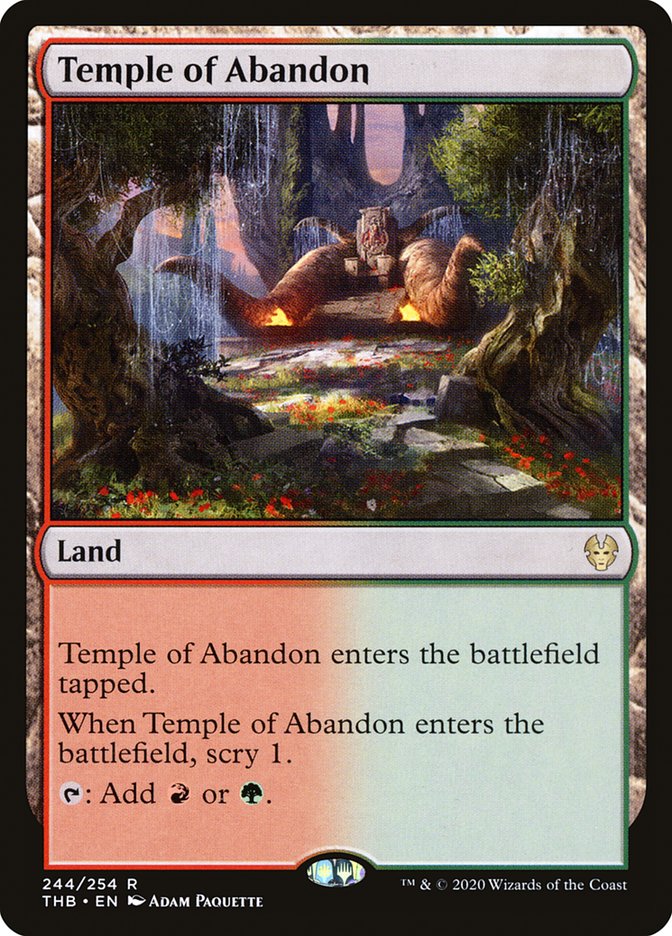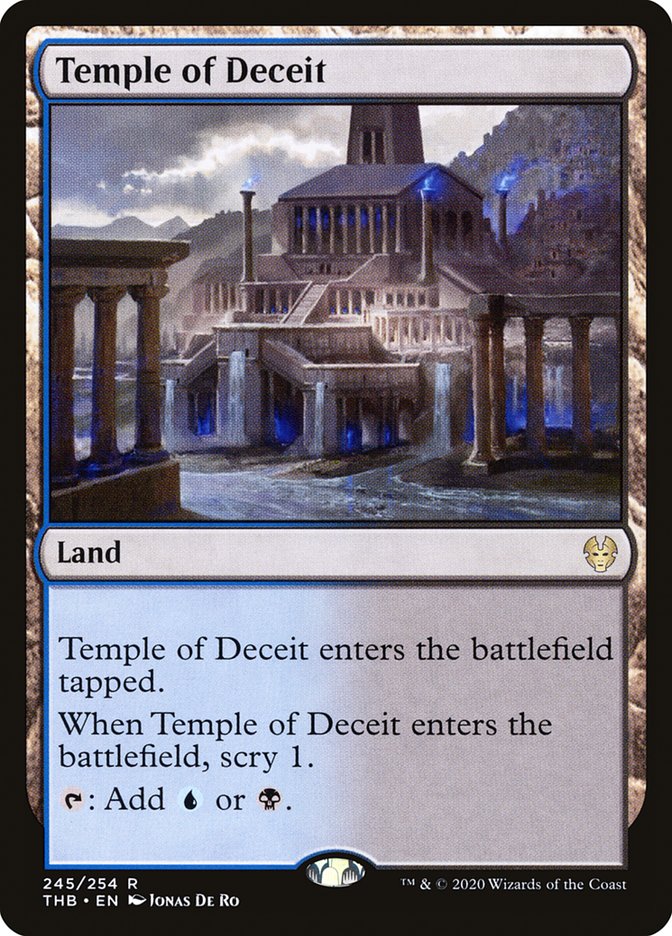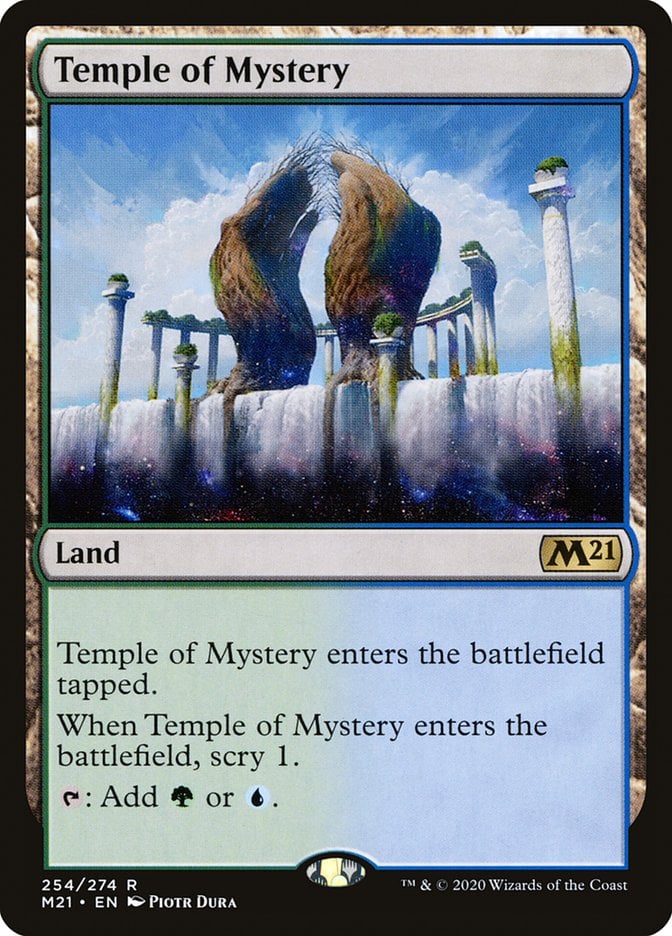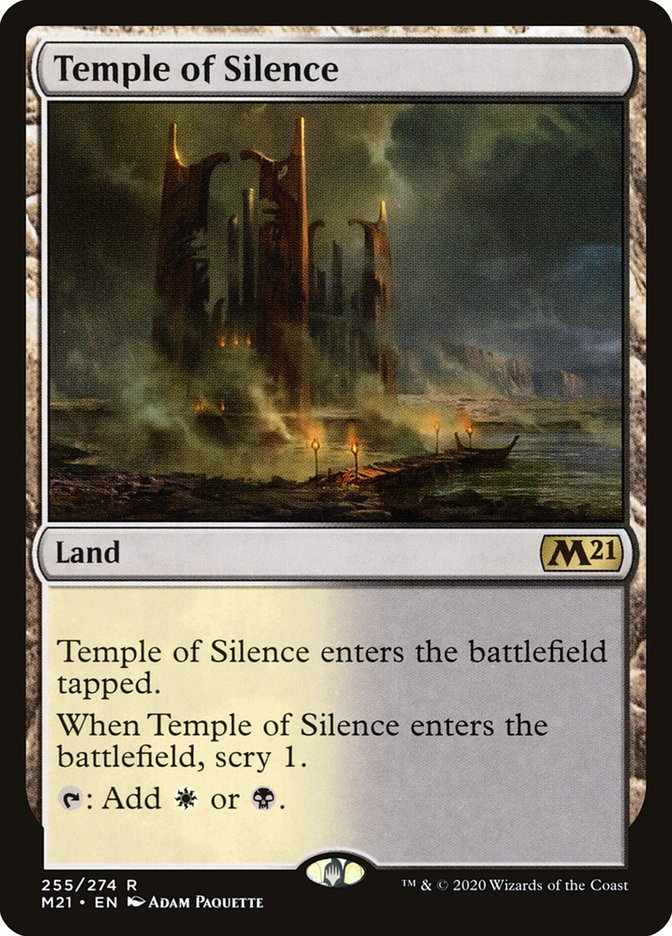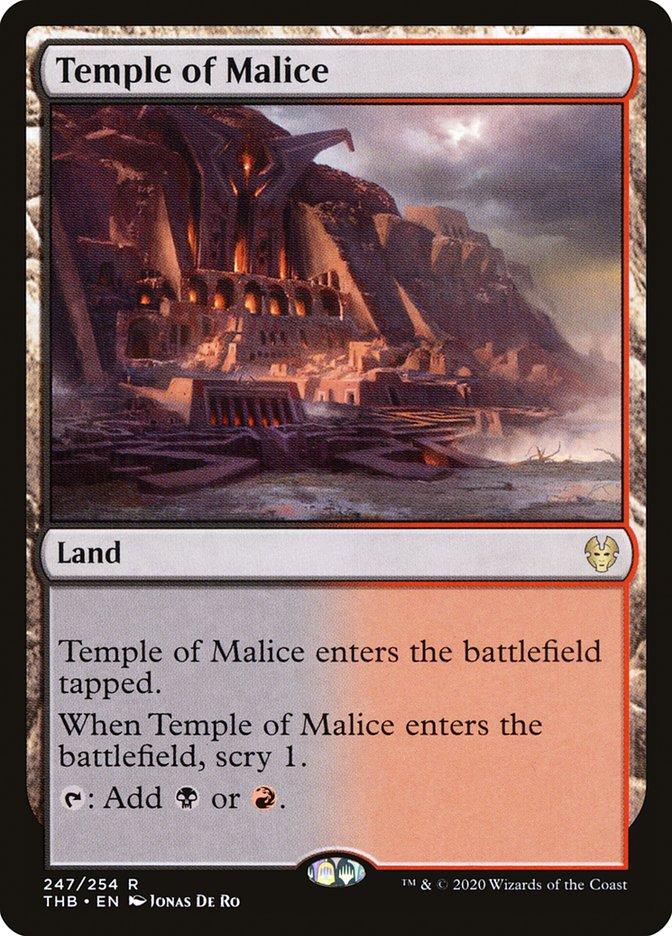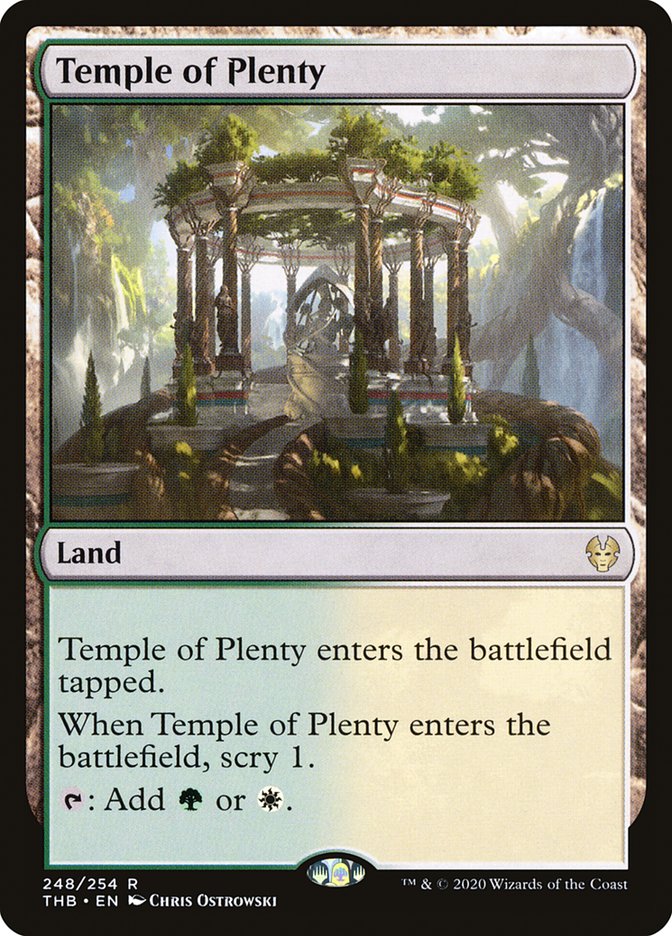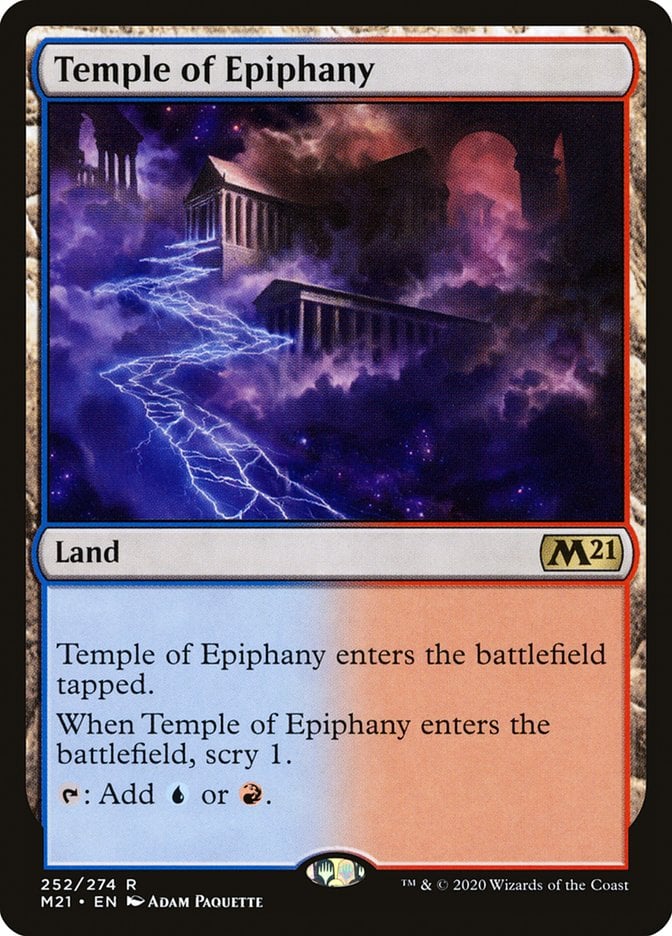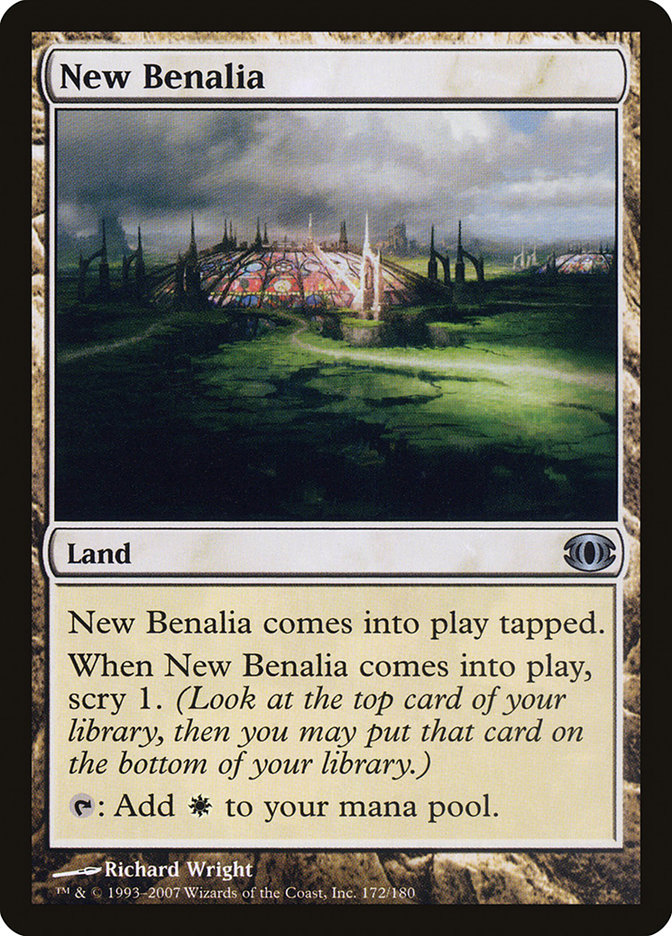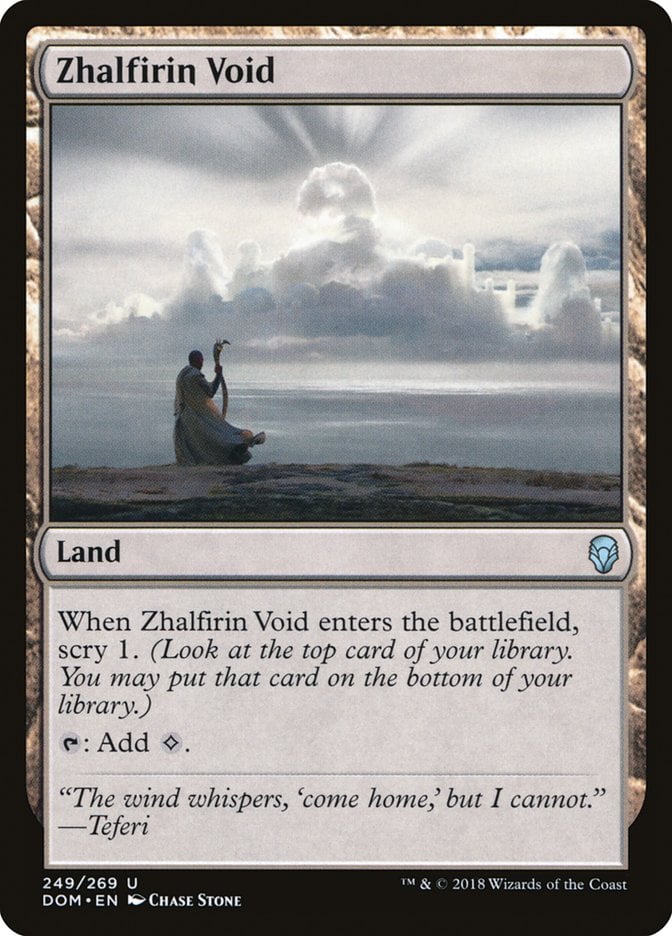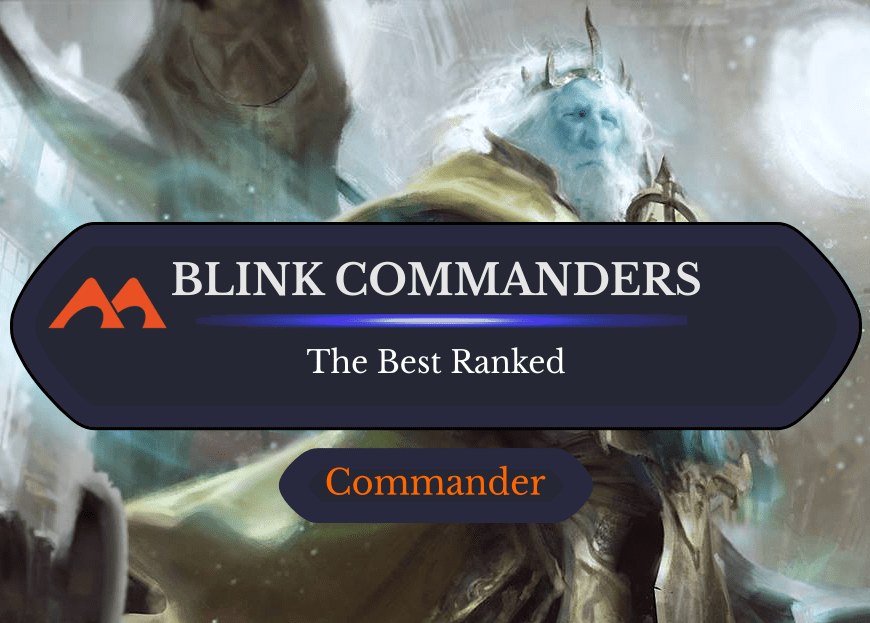Last updated on April 21, 2024
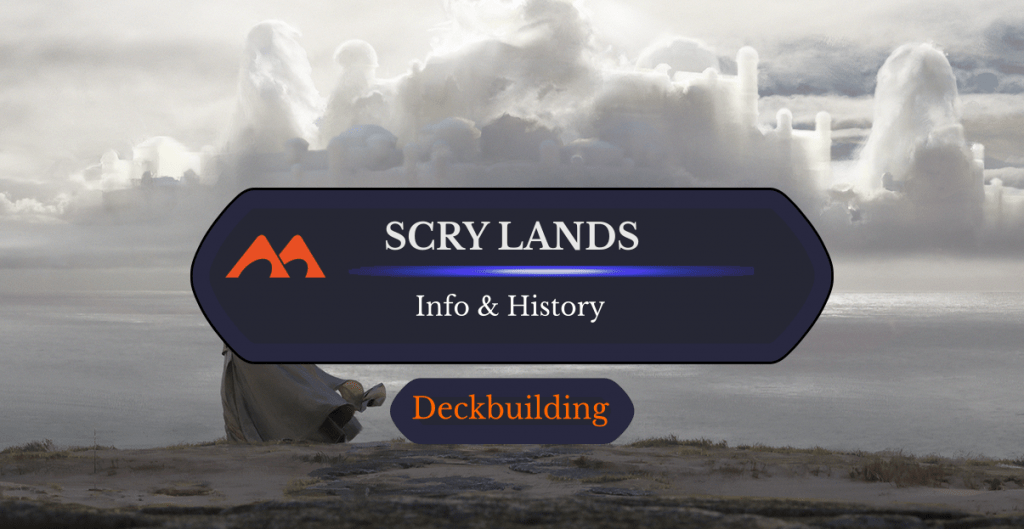
Zhalfirin Void | Illustration by Chase Stone
Hello and welcome to a new and exciting adventure over new horizons in MTG as WotC has given us plenty of exotic locales to travel across the multiverse. From fetch lands to check lands crossing all schools and guilds, there’s a lot yet to be discovered.
We’ll be exploring a special set of lands that are near and dear to my heart: scry lands. As their name suggests, these lands allow you to use the scry mechanic when they enter the battlefield to help to fix your draws in either the initial turns or the late game.
Let’s go over how they work, some history about them, then find out how they made an impact on the competitive scene once they were released.
What Is Scry?

Temple of Epiphany | Illustration by Adam Paquette
Okay, let’s go over what scry is.
Scry is a keyword that allows you to look at the X cards on the top of your library. You can then put them on the bottom of the library or leave them on top in any order. It was first introduced as a mechanic in the Alliances set on cards like Soldevi Excavations and was later designed as a keyword. It was first printed in Fifth Dawn on cards like Serum Visions.
When this happened, some older cards like Soldevi Excavations and Opt were changed to include the keyword. It was originally a single keyword like flying and trample but was later changed to a keyword action, adding a period after “Scry X” to indicate that it was no longer an ability.
According to Mark Rosewater, any color can scry 1, but scrying more is limited to certain colors. Blue is the primary color to scry. It also gets the largest scry numbers with red getting the lowest.
List of Scry Lands
I’m only including lands that trigger scry when they enter the battlefield. Cards like Castle Vantress and Lorehold Campus won’t be covered here and will just be mentioned for reference.
There are a couple of sets we need to talk through when going over these colorful lands. I’ve grouped them together based on the first set they were printed in, but we’ll also go over the sets where they were later reprinted.
An important thing to mention is that, even though all of these saw major play in Standard (and not most other formats) they were well received within the Commander community. Any fixing land with a utility is great in the format. Some of them were even reprinted in Commander sets, but we’ll get to that in a bit.
Theros
The Theros set was released in September 2013 and brought the first five scry lands:
These played a huge role in the Standard era of the time as they helped to get better overall draws. Games tended to go a bit longer as these lands entered the battlefield tapped and encouraged midrange and control strategies to rise and shine over the Standard meta of the time.
Let’s take a quick look at a deck from the Theros Pro Tour top 8. You can see that most decks wanted to run these just for the scry value. Even a mono-black deck that ideally wouldn’t need them for fixing ran them in the build just to get that little advantage over time.
Kentarou Yamamoto Mono-Black Devotion
Creatures (15)
Desecration Demon x4
Erebos, God of the Dead
Gray Merchant of Asphodel x4
Lifebane Zombie x4
Pack Rat x2
Instants (10)
Devour Flesh x2
Doom Blade x4
Hero's Downfall x4
Sorceries (4)
Thoughtseize x4
Enchantments (4)
Artifacts (2)
Lands (25)
Mutavault x4
Nykthos, Shrine to Nyx
Swamp x16
Temple of Silence x4
Sideboard (15)
Erebos, God of the Dead
Duress x4
Pithing Needle
Devour Flesh
Pharika's Cure x4
Xathrid Necromancer x4
Born of the Gods
Once Magic started with the cycle, it only made sense to continue over the next couple of sets. Born of the Gods was released in February 2014 introducing a few more scry lands:
The Standard meta changed at the time but the addition of new scry lands was clearly a big help, especially for the Azorius control archetype.
Journey into Nyx
Finally, in May 2014 two new scry lands were introduced to complete the cycle. The Standard meta was benefitted from this and Izzet control archetypes rose, giving players more alternatives to what they were used to. Journey into Nyx gave us these beauties:
The Other Ones
New Benalia and Zhalfirin Void are the only ones left to talk about. Both actually see some play currently. They’re both popular in the Commander metagame.
New Benalia
New Benalia was introduced in the Future Sight set and later reprinted in Duel Decks: Venser vs Koth and Heroes vs Monsters. For the mono-white Commander players, this one saw another reprinting in Commander 2013, Commander 2015, and Commander 2018. You can find this one in Mystery Boosters too.
Zhalfirin Void
While Zhalfirin Void has seen less play, it has a home in colorless Commander decks like Kozilek, Butcher of Truth. The only paper printing was in the Dominaria set.
Honorable Mention: Halimar Depths
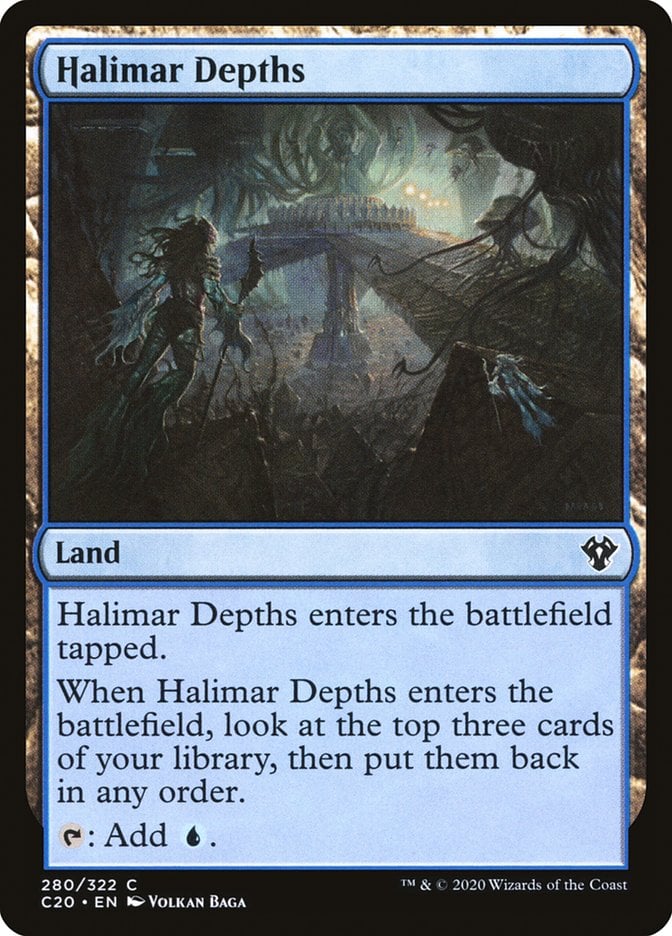
I also have to mention this land, as it was the first one that introduced the a similar function to the scry mechanic (originally in Worldwake). It didn’t quite get there as most players found out.
While it was good to reorder your next three draws, you ended up getting stuck with the same three cards and the land entered the battlefield tapped. Sure, when Halimar Depths was introduced, this was a big deal. You could shuffle your library in Standard with the available fetch lands, but the tempo cost was too heavy for a rather fast format.
Still, it was a nice card and definitely worth mentioning. But that said, let’s get to the scries!
Into the History
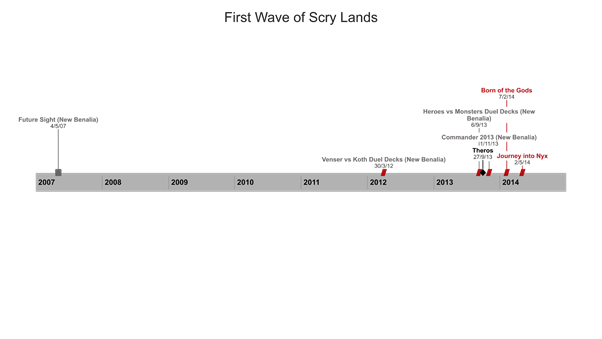
It took almost six years to get our hands on our first scry land duals and roughly four more years for the most recent prints. It’s not the end as the lands from the Theros block were reprinted in other collectors sets. Let’s find out which other versions you can get!
Reprints

The Theros lands were popular enough that WotC decided to reprint them in Core Set 2020 and Temple of Epiphany, Temple of Malady, Temple of Mystery, Temple of Silence, and Temple of Triumph became available in Standard once more.
A new mulligan rule came along with them called the “London Mulligan,” which means that you still draw seven cards, then select which cards to keep and which to put on the bottom of your library. For example, if you took two mulligans, you draw seven cards and then pick two of these to put on the bottom.
Bottom line, it felt like the scry lands came back to Standard to help new and old players alike understand the new mulligan rules.
What about the other ones? Well, those came a bit later on. Theros: Beyond Death gave us Temple of Abandon, Temple of Deceit, Temple of Enlightenment, Temple of Malice, and Temple of Plenty, and with them we now had a full cycle of scry lands in Standard.
But wait, there’s more! The second wave of reprints came around with Core Set 2021 and Commander 2021. These brought back a few more temples that had also been reprinted in M20: Epiphany, Malady, Mystery, Silence, and Triumph.
Playability
So great, the scry lands have been reprinted, but are they seeing play? The answer is yes.
Decks like rogues and Sultai control benefit from the scrying portion. This is huge as not only are the scry lands seeing play, but they compete for a spot in decks with the Triome lands which have had a place in the meta since they were introduced.
These lands have an important role in Standard but they’re probably at the bottom of the rare lands in terms of power level, more on par with the show lands. It’s not that they’re bad, as the scry effect has its benefits, but it’s hard to justify entering the battlefield tapped in formats like Modern where you can abuse shock and fetch lands. The format’s faster thanks of the power level of the other nonbasic lands available.
That being said, scry lands have their moment in the sun in Commander decks. Every mana fixing or dual land is welcome, especially with the introduction of multicolored commanders.
Another big fan of scry lands is Cube. Building a robust mana base for your deck with your friends requires every possible fix you can manage. While these lands aren’t great in multiples when you have the Singleton restriction, they still shine in multicolor strategies.
One thing that’s funny about these lands is that you don’t need to look for cheaper replacements. Cards with the scry ability like Castle Vantress are a bit pricier than the actual scry land cycle from Theros. Plus it only adds one color. Who needs that?
Impact on Mana Bases
Remember when I told you that any fixing is good and that scry lands shine in Commander? Well, there’s a catch. You actually need to cast them. In Limited, there’s a saying when you’re trying to choose between a powerful card or land that can fix your mana on a pick: “I like powerful spells, but I like being able to cast spells even more.”
It’s easier to cast your spells on a curve with lands that add multiple colors than trying to curve out by just running basic lands. Scry lands in particular help to fix your plays and are good both early and late game.
You can afford to keep a 1-lander and play a turn 1 scry early game to see if your next card is a land. If it’s not, you just put it on the bottom. In the late game, scry lands keep you from getting flooded. Some players prefer to play their scry lands later rather than in the first stages of the match, especially if they run mana bases of around 26 lands.
Speaking of mana bases, the archetypes where scry lands have the most success are decks with 26+ lands in constructed or 18+ lands in Limited. This is because of the nature of how those take advantage of controlling the board. On the contrary, an aggro deck won’t be willing to run scry lands because they want to play their spells as early as they can and entering the battlefield tapped is a major drawback.
Where to Get Scry Lands
If you’re going to buy scry lands, I recommend buying from a trusty seller or your local game store. They’re not super popular and you usually just want one or two. Your LGS will probably have multiple and their price is $2tops, but most of them are as cheap as $0.50.
Popular Sellers
You can try eBay to get the lands in bulk. A similarly good option is Amazon. Although there’s no “low listing and bidding,” prices are typically pretty comparable with multiple sellers competing, and the same goes with shipping.
There are multiple extended and alternate versions that may go up to and above the $10 range, but it’s still cheaper than a fetch land. If you’re looking to pimp your casual decks, a good place to look for them is TCGPlayer.
MTG Online
The economy on MTGO is utterly different than Magic’s paper economy. Cheap paper cards can cost a fortune on MTG Online and vice versa.
But the market is pretty liquid so you should be able to get a reasonable price. You can check the online pricing very easily on Cardhoarder or use their loan program to play whatever deck you want without worrying about buying the cards.
Doing some quick research, most of these lands cost as much as 0.05 tix, which is the equivalent of $0.05. The scry lands would be an awesome addition to your MTGO Commander decks if you haven’t added them already.
The Final Scry

Temple of Abandon | Illustration by Adam Paquette
We’ve come to an end to our journey. While it was short, I hope you have some new ideas on how to better build your decks while using scry lands, not only because they’re one of the cheapest but also because they’re great for multicolored builds.
What are your thoughts on these lands? Would you like to see them in future Standard sets? Let us know in the comments below!
Note: this post contains affiliate links. If you use these links to make a purchase, you’ll help Draftsim continue to provide awesome free articles and apps.
Follow Draftsim for awesome articles and set updates: